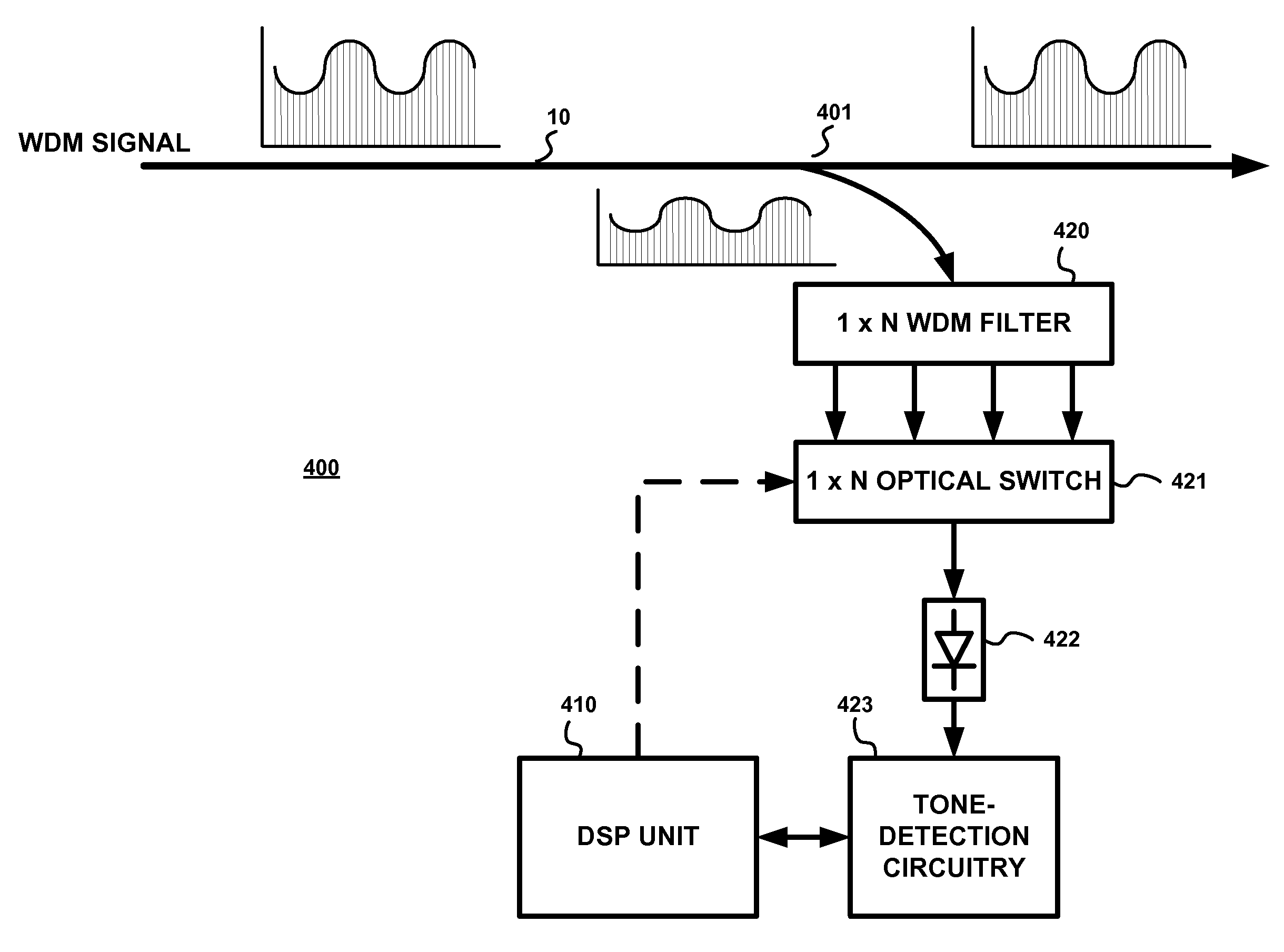Apparatus and method for improving the tolerance of tone-based optical channel monitoring to stimulated raman scattering
a tone-based optical channel and wavelength tracker technology, applied in the field of optical communication, can solve the problems of power tilt and degradation of optical signal-to-noise ratio, affecting system performance, and inaccuracy may become so large, and achieve the effect of improving the tolerance of wavelength trackers to srs-induced crosstalk and increasing the accuracy of tone-based optical channel monitoring
- Summary
- Abstract
- Description
- Claims
- Application Information
AI Technical Summary
Benefits of technology
Problems solved by technology
Method used
Image
Examples
Embodiment Construction
[0015]FIG. 1 is a block diagram of an exemplary wavelength tracker system 100. The system comprises an optical tap 101 which taps a small portion (e.g., ≦10% by power) of an optical WDM signal on an optical path 10 to be monitored. The optical tapped signal is converted to an electrical signal by an optical detector 102, such as a photodiode, a PIN detector, or the like. In an exemplary embodiment, a relatively low-speed (˜1 MHz) photodiode can be used for this purpose.
[0016]The electrical signal is provided to a tone detector 120. In the tone detector 120, the electrical signal is provided to a variable gain amplifier (VGA) 121 whose gain is controlled by a digital signal processing (DSP) unit 110, described in greater detail below. The output of the VGA 121 is coupled to a low-pass filter (LPF) 122 and a high-pass filter (HPF) 123. The output of the HPF 123 is coupled to an amplifier 125 whose output is coupled to a high-speed analog-to-digital converter (ADC) 127. The output of t...
PUM
 Login to View More
Login to View More Abstract
Description
Claims
Application Information
 Login to View More
Login to View More - R&D
- Intellectual Property
- Life Sciences
- Materials
- Tech Scout
- Unparalleled Data Quality
- Higher Quality Content
- 60% Fewer Hallucinations
Browse by: Latest US Patents, China's latest patents, Technical Efficacy Thesaurus, Application Domain, Technology Topic, Popular Technical Reports.
© 2025 PatSnap. All rights reserved.Legal|Privacy policy|Modern Slavery Act Transparency Statement|Sitemap|About US| Contact US: help@patsnap.com



